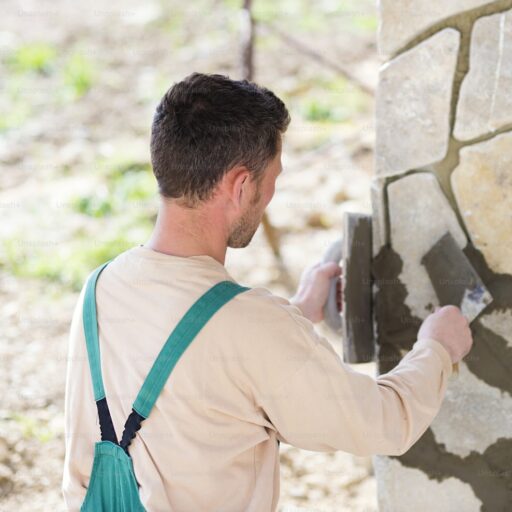So, you’re dreaming of a beautiful patio or maybe a garden walkway that’ll make your neighbors do a double take? You’ve likely stumbled upon the big question: Virginia sandstone slabs or concrete?
Let’s be real—concrete might seem cheaper or easier at first, but it’s like choosing fast food over a home-cooked meal. Sure, it fills the need, but doesn’t satisfy your long-term cravings for charm, longevity, and character.
Here’s why Virginia sandstone slabs are the real MVP when it comes to landscape design.
1. Natural Beauty That Enhances Curb Appeal
Organic Tones and Textures
Sandstone has that timeless, earthy vibe you just can’t fake. Unlike concrete, which often looks, well… concrete-y, Virginia sandstone is full of unique swirls, speckles, and color variations. Every slab is like a fingerprint—no two are the same.
If you’re chasing that wow factor, go check out the natural stone slabs from Southern Stoneworks—you’ll instantly see the difference.
Seamless Integration with Nature
Sandstone fits naturally into any landscape. Whether you’re building a peaceful Zen garden or a cozy fire pit zone, it blends instead of clashes. Pair it with boulders and steps for that layered, organic look.

2. Durability That Stands the Test of Time
Weather-Resistant for All Seasons
Virginia sandstone handles harsh weather like a champ—rain, snow, sun? No problem. Concrete, on the other hand, tends to crack under extreme conditions. Sandstone is built to last.
Outlasts Concrete Under Pressure
This isn’t just about surviving weather. Sandstone is dense and tough, holding up to foot traffic, outdoor furniture, and even vehicles in some cases. That’s why it’s commonly used in wall stone retaining walls and heavy-duty landscaping.
3. Eco-Friendly and Sustainable Choice
Locally Sourced and Low Impact
Most Virginia sandstone is quarried close to home, which reduces the carbon footprint compared to imported materials. If you’re into natural materials, sandstone checks every box.
Less Energy to Manufacture
Unlike concrete, which requires energy-intensive processing, sandstone is mined, cut, and ready to go. Minimal processing means less pollution.
4. Incredibly Versatile in Design
Perfect for Modern and Rustic Spaces
Want a clean, modern patio or a rustic garden path? Sandstone can do both. It adapts to your style, whether you’re thinking clean lines or charming chaos. Browse the patio slabs section for layout inspiration.
Customizable Shapes and Sizes
Cut it, shape it, stack it, or lay it flat. Sandstone gives you room to be creative. It’s ideal for DIY projects, especially if you’re into backyard pavers or custom veneer designs.
5. Low Maintenance and Easy to Clean
No Cracking Like Concrete
Concrete loves to crack. Sandstone? Not so much. Its natural durability makes it a low-maintenance option. And even if a slab does chip or wear slightly—it actually adds more character.
Simple Upkeep with Basic Tools
Forget pressure washers and industrial cleaners. Sandstone just needs a broom and occasional rinse. Some flagstone care goes a long way, especially for outdoor spaces.
6. Timeless Appeal That Increases Property Value
Boosts Home Aesthetics Instantly
A sandstone patio or walkway gives your home an instant upgrade. It says “luxury” without being too flashy. This is especially true with sandstone veneers, which give walls a textured, premium feel.
Great for Long-Term Investment
Unlike trendy materials that come and go, sandstone is timeless. If you’re thinking about selling your home down the road, natural stone pays off in curb appeal and appraisal value.
7. Safe and Slip-Resistant Surfaces
Ideal for Pool Decks and Patios
Ever slipped on wet concrete? Not fun. Sandstone naturally has a rougher texture, making it safer in wet conditions. It’s ideal for stone patio ideas near pools, outdoor kitchens, or garden paths.
Comfortable for Bare Feet
Even in the heat, sandstone stays cool and smooth underfoot—perfect for barefoot strolls across your patio.
Bonus: Where to Find High-Quality Sandstone Slabs
Southern Stoneworks – Trusted Stone Supplier
Looking to source the best Virginia sandstone slabs for your next outdoor project? Southern Stoneworks has you covered with a wide range of pavers and flagstone options and affordable landscaping materials.
Explore More Outdoor Ideas
Want to get inspired? Check out these popular tags:
Conclusion
If you’re on the fence about whether to go with Virginia sandstone slabs or concrete, now you’ve got your answer. Sandstone is beautiful, durable, eco-friendly, safe, and just flat-out cool (literally and figuratively). It’s the kind of material that transforms your space from “meh” to magazine-worthy.
Skip the concrete. Go natural. Go sandstone.
FAQs
1. Are Virginia sandstone slabs expensive?
Not necessarily. While the upfront cost may be slightly higher than concrete, sandstone is a better investment long-term due to its durability and low maintenance needs.
2. Do sandstone slabs work in all climates?
Absolutely. Virginia sandstone is tough enough to withstand freezing winters and scorching summers.
3. Can I install sandstone slabs myself?
Yes! Many homeowners tackle DIY projects with sandstone, especially when using pavers and flagstone.
4. Will sandstone match my existing outdoor decor?
Sandstone’s neutral tones blend with almost any aesthetic, from rustic to modern designs.
5. Is sandstone slippery when wet?
Not at all. It offers natural grip, making it safer than polished concrete or tiles—especially around pools.
6. How do I clean my sandstone patio?
Just a broom and garden hose usually do the trick. For deeper cleaning, mild soap and water work fine.
7. Where can I find inspiration for my sandstone project?
Head over to Southern Stoneworks and browse through their blog and product pages for project ideas and pro tips!

